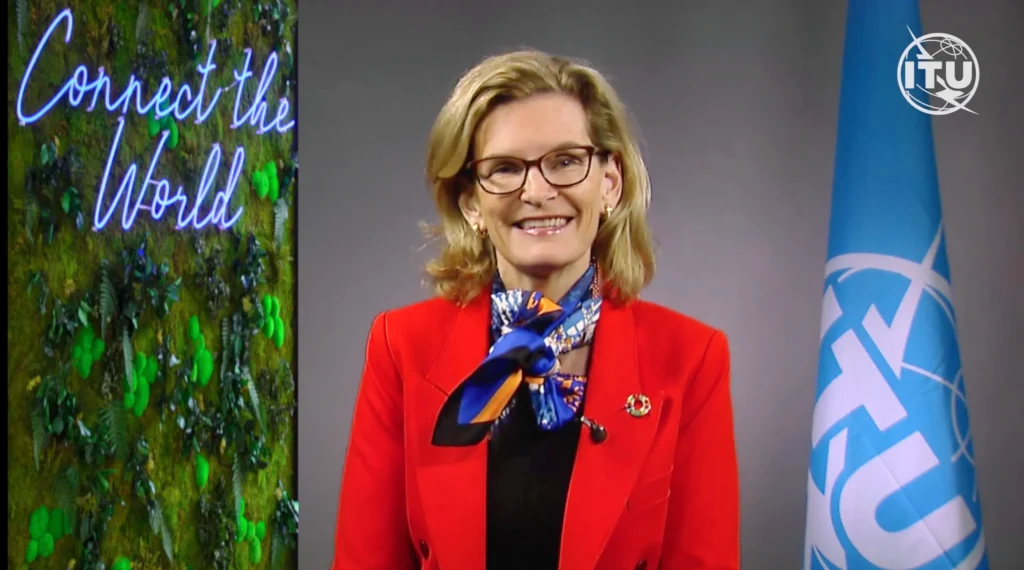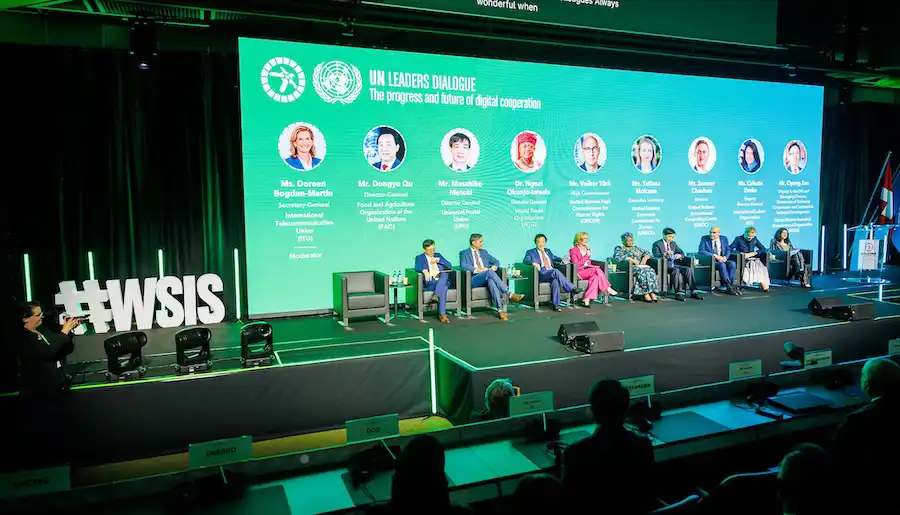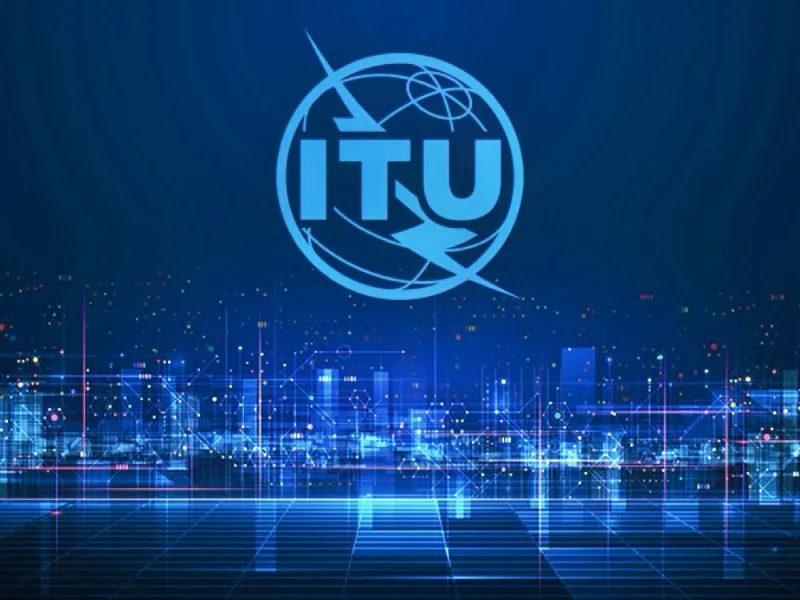- The International Telecommunication Union (ITU) is a specialised agency of the UN responsible for issues related to information and communication technologies (ICTs).
- The ITU’s mission is to ensure that ICTs are accessible and affordable, thereby contributing to global development and sustainable progress.
OUR TAKE
The ITU stands as a cornerstone in shaping the global landscape of telecommunications and information technologies. This United Nations specialised agency has been at the forefront of establishing and harmonising standards, fostering innovation, and facilitating international cooperation in the realm of telecommunications. This feature delves into the ITU’s development, structure, mission, key achievements, and its vital role in the future of global connectivity.
–Zora Lin, BTW reporter
The International Telecommunication Union (ITU), founded in 1865 to focus on telegraph communications, now covers the fields of radio, satellite, broadband and emerging technologies. ITU sets international standards, supports ICT infrastructure in developing countries and advises on regulatory policies. Its work in promoting universal connectivity, bridging the digital divide, and fostering innovation has had a profound impact on the way we communicate and interact in the modern world.
Under the Connect 2030 Agenda, the ITU aims to achieve full digital inclusion by 2030, in line with the United Nations Sustainable Development Goals (SDGs). Looking to the future, ITU is committed to expanding broadband, advancing digital skills and strengthening global cooperation in the face of technological change.

What is the International Telecommunication Union (ITU)?
The ITU is a specialised agency of the United Nations responsible for issues related to information and communication technologies (ICTs). Established in 1865, the ITU is one of the oldest international organisations and was initially created to standardise and regulate international telegraphy. Its mission has since expanded to cover a wide range of technological areas, including radio communications, satellite communications, broadband internet, and emerging technologies.
Headquartered in Geneva, Switzerland, ITU’s membership comprises 193 member States and more than 700 sectoral and associate sectoral and academic members. World Telecommunication Day is celebrated on 17 May each year. This year marks the 159th anniversary of ITU.
Also read: ST Telemedia: Pioneering innovation and sustainability in telecommunications
Also read: What kind of internet connection is Spectrum?
Development track of the ITU
Expansion
As technology advanced, the ITU evolved to address new challenges. The advent of radio communications in the early 20th century necessitated the expansion of ITU’s mandate. In 1932, the organisation adopted its current name, the International Telecommunication Union, to reflect its broadened scope. The ITU’s responsibilities grew to encompass radio, television, satellite communications, and, eventually, internet technologies.
Modernisation and Global Impact
In recent decades, the ITU has continued to adapt to the rapid pace of technological innovation. The rise of the internet, mobile communications, and emerging technologies such as 5G and the Internet of Things (IoT) have driven the ITU to play a critical role in developing global standards, fostering international cooperation, and addressing the digital divide.
“No matter how fast technology evolves, innovation has always been a uniquely human enterprise, and innovation can start with anyone. Digitisation not only gives us the power to connect ideas, it also helps us connect with each other.”
Doreen Bogdan-Martin, Secretary-General of ITU
Mission and objectives
The ITU’s mission is to ensure that telecommunications and ICTs are accessible, affordable, and universally available, thereby contributing to global development and sustainable progress. Here are its primary objectives.
1. Standardisation: Developing and promoting international standards for telecommunications and ICTs to ensure interoperability, safety, and efficiency.
2. Development: Supporting the development and deployment of ICT infrastructure and services, particularly in developing countries, to bridge the digital divide.
3. Policy and Regulation: Assisting governments and regulatory bodies in formulating policies and regulations that foster a competitive and inclusive telecommunications environment.
4. Global Coordination: Facilitating international cooperation and coordination among member states, industry stakeholders, and other organisations to address global challenges and opportunities in ICTs.

In order to ensure that all voices are heard, especially those of developing countries, the ITU attaches great importance to the construction of AI-related standardisation, and currently more than 200 AI-related standards have been completed and published or are in the process of developing, but in order to meet the challenges, this standard development work is far from enough. There is a need for further acceleration and greater coordination.
“In a survey of its 193 member states on AI governance, the ITU found that 85% of countries have not yet adopted governance and regulatory measures, but all countries have expressed interest in the issue.”
Doreen Bogdan-Martin, Secretary-General of ITU
The ITU regards human rights protection, inclusive development, and capacity building as core principles of AI governance, and through cooperation with agencies such as the United Nations Development Programme, is committed to helping countries strengthen their capacity to better address the opportunities and challenges posed by AI development.
Pop quiz:
The Connect 2030 Agenda of ITU was introduced in which year?
A. 2016
B. 2017
C. 2018
D. 2019
The correct answer is at the bottom of the article.
Structure and governance
The ITU is governed by a complex structure designed to facilitate global cooperation and decision-making. Its main components include:
1. The Plenipotentiary Conference: The highest decision-making body of the ITU, held every four years, where member states gather to set the organisation’s strategic direction, approve the budget, and elect key officials.
2. The Council: Responsible for overseeing the ITU’s activities between Plenipotentiary Conferences. The Council is composed of 48 member states elected for a four-year term and ensures that the decisions made at the Plenipotentiary Conference are implemented effectively.
3. The General Secretariat: Headed by the Secretary-General, the General Secretariat is responsible for the day-to-day operations of the ITU. It implements decisions made by the Plenipotentiary Conference and the Council and coordinates the ITU’s work across its various sectors.
4. The ITU Sectors: The ITU operates through three main sectors. ITU-R (Radiocommunication Sector) focuses on radio communication, including satellite, terrestrial, and space communications. ITU-T (Telecommunication Standardisation Sector) develops international standards for telecommunications and ICTs. ITU-D (Telecommunication Development Sector) works on promoting the development of telecommunications and ICTs, particularly in developing countries.
“When it comes to AI governance, the transition from principle to implementation is very challenging, mainly because the relevant principles are too abstract to be directly translated into real governance solutions, and they cannot catch up with the rapid development of AI technology.”
AI Governance Day – From Principle to Implementation, published by ITU
Key achievements and contributions
Standardisation
The ITU’s role in developing international standards cannot be overstated. Its work ensures that different telecommunications systems and devices can operate seamlessly together, regardless of where they are used. Key achievements include:
Global Frequency Allocation: The ITU coordinates the use of the radio frequency spectrum to prevent interference and optimise its use for various applications, such as broadcasting, mobile communications, and satellite services.
ITU-T Standards: The ITU-T has developed numerous standards that underpin global telecommunications, including protocols for data transmission, network security, and multimedia communication. Standards such as ITU-T H.264 (video compression) and ITU-T V.92 (modem standards) are widely used in the industry.
Bridging the Digital Divide
ICT Development Index (IDI): The ITU publishes the IDI, which measures and tracks progress in ICT development across countries. The IDI helps identify gaps and guide policies to improve connectivity and digital inclusion. It provides insights into the practical adoption and application of ICT in daily life and business operations.

Connect 2030 Agenda of ITU
The Connect 2030 Agenda is a strategic framework developed by the International Telecommunication Union (ITU) to address global challenges and opportunities in information and communication technologies (ICTs). Launched in 2017, this initiative aims to promote universal connectivity and digital inclusion, ensuring that the benefits of ICTs are accessible to all by the year 2030. The agenda aligns with the United Nations’ Sustainable Development Goals (SDGs) and sets ambitious targets for expanding broadband connectivity, enhancing digital skills, and fostering innovation. Here is its major progress.
Increase in Broadband Access: According to ITU statistics, global broadband access has improved over the past few years. The expansion of broadband infrastructure, particularly in developing countries, has been significantly accelerated. This expansion plays a crucial role in bridging the digital divide and increasing internet penetration.
Promotion of 5G and Fiber Networks: The deployment of 5G networks and fiber broadband has been accelerated in several countries. ITU-supported technical standards and policy frameworks have provided guidance for the promotion of these advanced technologies and facilitated their global application.
Implementation of Educational Programs: Governments and non-governmental organisations in various countries have implemented digital skills training programs targeting different age groups and skill levels, according to the framework of Connect 2030. Digital skills courses have been increasingly integrated into educational systems, leading to improved digital literacy and education levels in many regions.
“We should also remember that too many people have been left behind, with only one-third of the population in the least developed countries connected to the Internet; It is our shared responsibility to support LDCS in transforming their potential into prosperity through technology.”
Doreen Bogdan-Martin, Secretary-General of ITU
Expansion of Training Programs: Numerous areas have launched digital skills training programs for adults and marginalised communities. These programs have enhanced local residents’ employability and promoted their participation in the digital economy.
Advancement of Regulatory Policies: Some countries have adopted policies and regulations aligned with the Connect 2030 plan, which have facilitated the construction of broadband infrastructure and the proliferation of digital technologies. International cooperation has achieved some progress in establishing consistent regulatory standards.
Challenges and future outlook
While the ITU has made significant strides in advancing global telecommunications, it faces several challenges.
1. Managing Emerging Technologies: Rapid advancements in technologies such as 5G, IoT, and AI require the ITU to continuously update its standards and policies to address new opportunities and risks.
2. Addressing the Digital Divide: Despite progress, significant disparities in internet access and digital skills persist, particularly in developing countries and rural areas. The ITU must continue its efforts to ensure that all populations benefit from technological advancements.
3. Regulatory and Policy Coordination: As technology evolves, coordinating regulations and policies across different countries and regions becomes increasingly complex.
The successful implementation of the Connect 2030 plan will depend on the continued collaboration and joint efforts of global stakeholders.
In the future, ITU will continue to invest in broadband infrastructure, especially in remote and underserved areas, to achieve global universal connectivity, enhancing international collaboration and coordination to establish unified standards and policies that support the development and application of global technologies. It also continues to advance cutting-edge technologies while ensuring that the application aligns with sustainable development goals and minimises environmental impact.
The correct answer is B, 2017.

